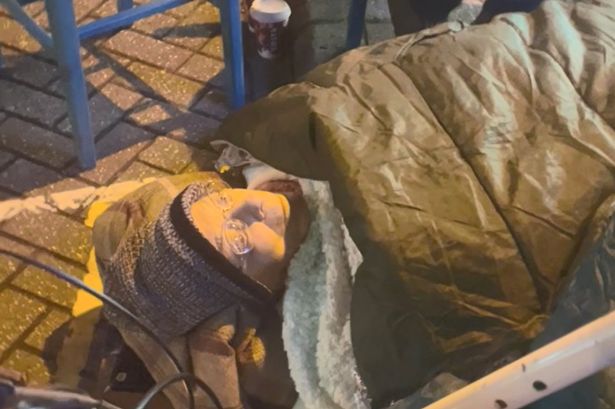Winifred Soanes, a 95-year-old resident, experienced a significant health crisis after suffering a broken hip from a fall in Christchurch High Street, Dorset. The incident highlights the challenges faced by elderly individuals, particularly in relation to mobility and the risk of falls, which are increasingly common in this age group due to factors like frailty, vision impairment, and balance issues. This unfortunate event not only underscores the importance of fall prevention strategies for seniors but also raises questions about the adequacy of emergency medical services in promptly responding to emergencies involving vulnerable populations.
After sustaining her injury, Mrs. Soanes faced a distressing wait of five hours for an ambulance to arrive. This delay in receiving medical attention can have serious implications for elderly patients, as extended wait times can complicate their medical conditions and lead to increased pain and discomfort. The case brings to light the pressures on the UK’s healthcare systems, particularly the ambulance services which are often stretched thin due to high demand and limited resources. Such situations can escalate into more severe health concerns for elderly patients who may not have the resilience to endure prolonged delays in receiving care.
The response time of emergency services has been a growing concern in many regions, with various factors contributing to these delays. High call volumes, staffing shortages, and logistical challenges are common issues that emergency services face. In Mrs. Soanes’s case, the long wait left her in a vulnerable position, both physically and emotionally. It also emphasizes the need for a critical assessment of current emergency response protocols and potential reforms aimed at improving the efficiency and effectiveness of ambulance services, especially for the aging population who require immediate assistance.
Furthermore, the incident serves as a reminder of the broader societal responsibility to ensure that the health and safety needs of the elderly are adequately addressed. Communities can play a vital role in supporting senior citizens and implementing preventative measures, such as organizing fall prevention programs and ensuring safe environments for them. By fostering community awareness and involvement, it is possible to reduce the occurrence of falls and improve emergency response times through community networks and support systems that can assist the elderly in emergencies.
The story of Winifred Soanes is also a call to action for policymakers to prioritize healthcare reforms that consider the unique needs of the elderly. This includes investing in enhanced training for emergency medical personnel, increasing ambulance capacity, and promoting public health initiatives that encourage active aging and fall prevention. With an aging population, addressing these challenges is crucial for maintaining the well-being and dignity of older adults, ensuring that they receive timely and appropriate care when they need it most.
In conclusion, the ordeal faced by Winifred Soanes not only highlights the fragility of elderly health but also reveals systemic gaps in emergency medical responses. It is essential for both health services and communities to converge in their efforts to create a safer and more responsive environment for seniors. By addressing the root causes of delays in emergency care and fostering proactive strategies to prevent falls, society can better serve its aging population and enhance their quality of life. Mrs. Soanes’s experience should resonate as a poignant reminder of the urgent need for reforms and community support systems that prioritize the safety and health of the elderly.














